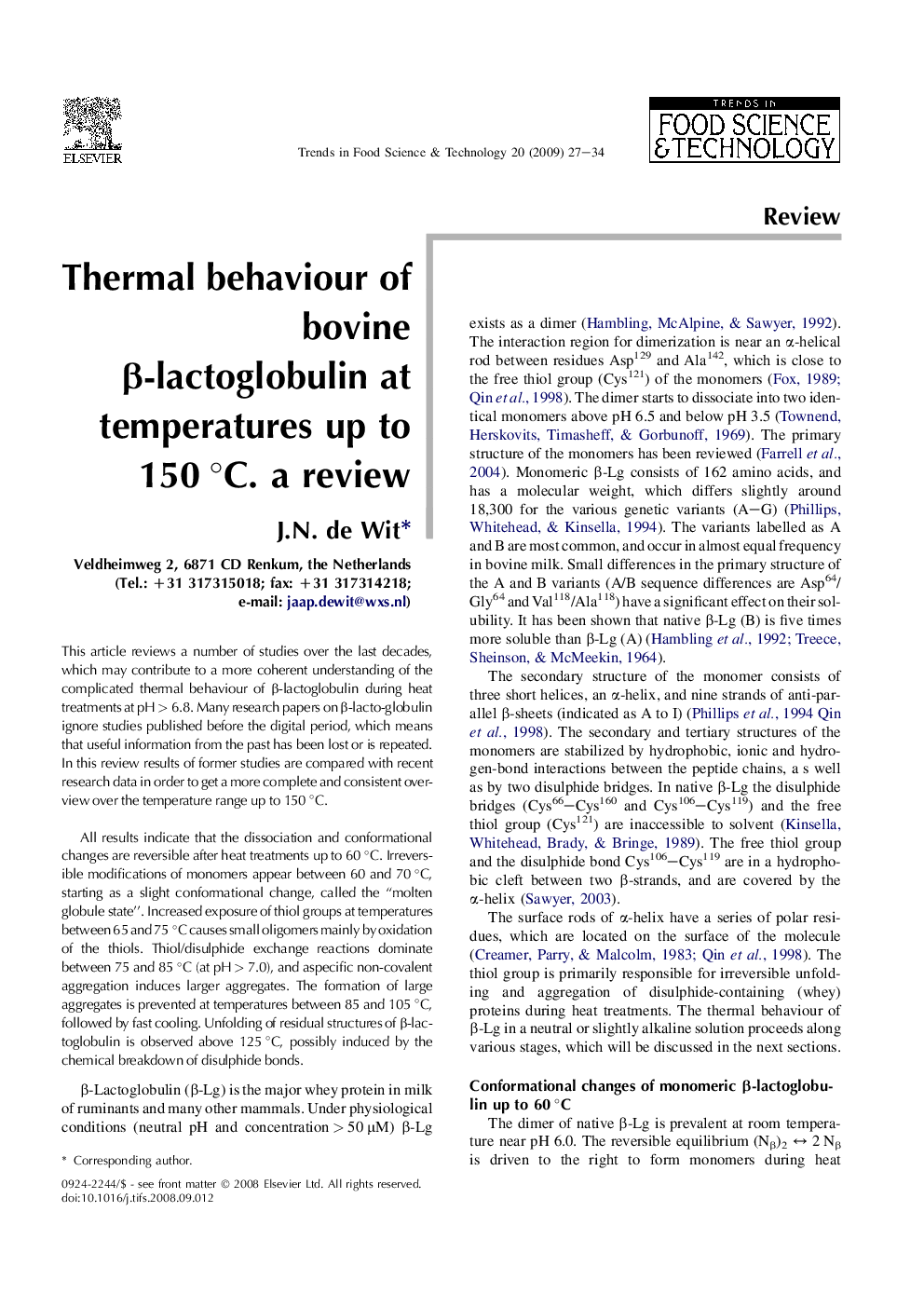| Article ID | Journal | Published Year | Pages | File Type |
|---|---|---|---|---|
| 2099288 | Trends in Food Science & Technology | 2009 | 8 Pages |
This article reviews a number of studies over the last decades, which may contribute to a more coherent understanding of the complicated thermal behaviour of β-lactoglobulin during heat treatments at pH > 6.8. Many research papers on β-lacto-globulin ignore studies published before the digital period, which means that useful information from the past has been lost or is repeated. In this review results of former studies are compared with recent research data in order to get a more complete and consistent overview over the temperature range up to 150 °C.All results indicate that the dissociation and conformational changes are reversible after heat treatments up to 60 °C. Irreversible modifications of monomers appear between 60 and 70 °C, starting as a slight conformational change, called the “molten globule state”. Increased exposure of thiol groups at temperatures between 65 and 75 °C causes small oligomers mainly by oxidation of the thiols. Thiol/disulphide exchange reactions dominate between 75 and 85 °C (at pH > 7.0), and aspecific non-covalent aggregation induces larger aggregates. The formation of large aggregates is prevented at temperatures between 85 and 105 °C, followed by fast cooling. Unfolding of residual structures of β-lactoglobulin is observed above 125 °C, possibly induced by the chemical breakdown of disulphide bonds.
